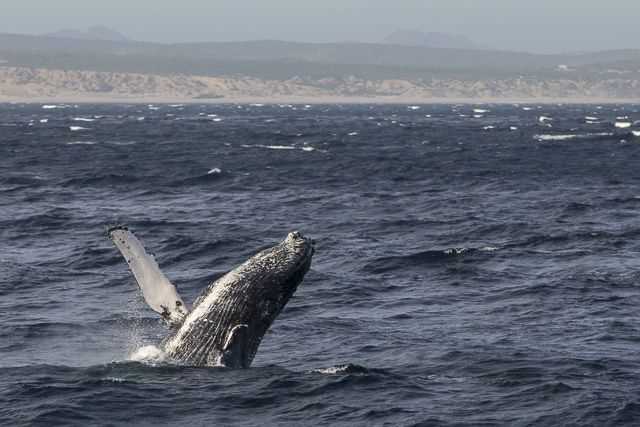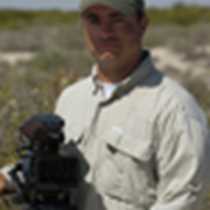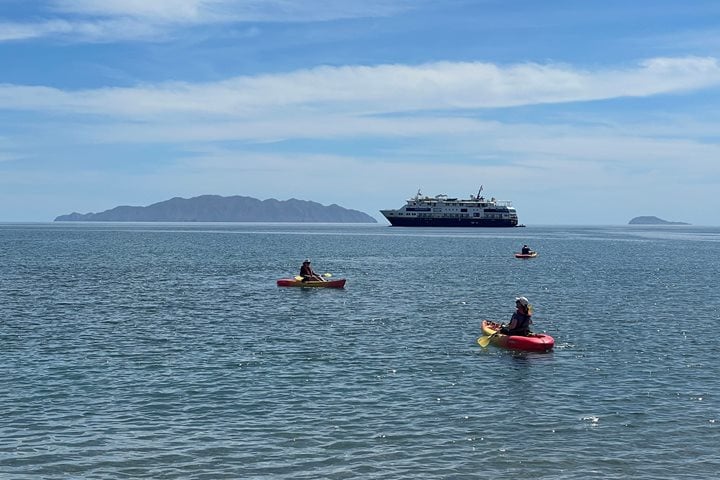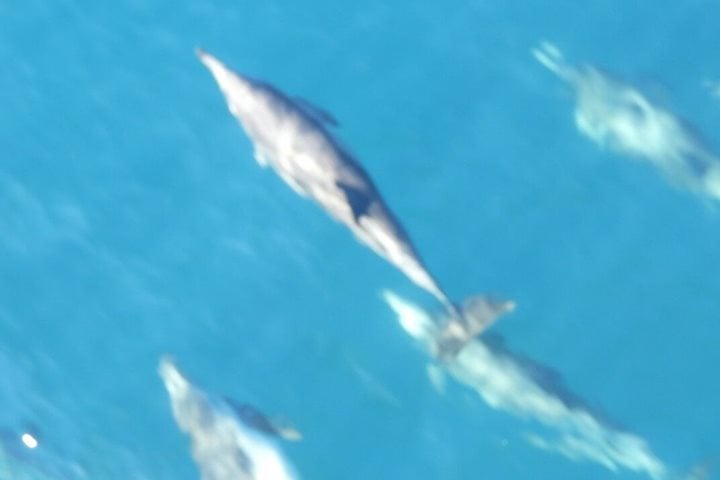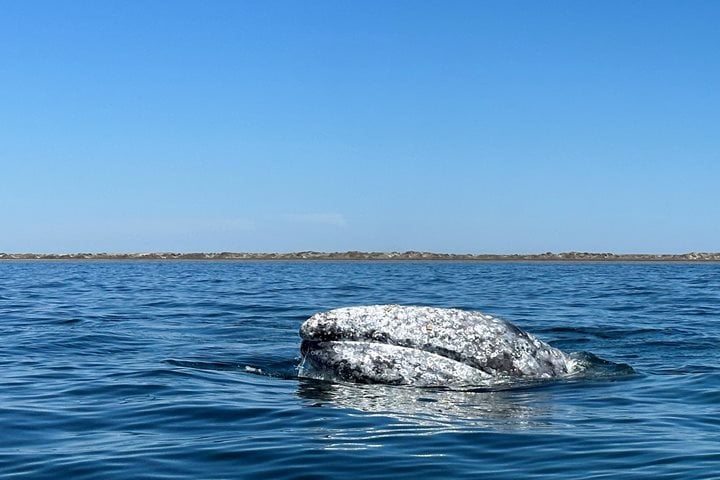After having sailed south all night long, the National Geographic Sea Bird arrived to the southern end of the Baja California Peninsula shortly before sunrise. The lights of the world famous Cabo San Lucas were still on, and a humpback whale showed its flukes up in the air just in front of the granitic rock formation at Land’s End. Many yachts, pangas, and other vessels moved quickly away from the marina towards the open ocean to start their daily quest for mahi-mahi (better known there as dorado) while the iconic rock arch changed colors as the sun came up from the Eastern horizon and a peregrine falcon flew around.
We continued sailing deeper into the Sea of Cortez and arrived to the quieter of the two settlements in the Capes area, San José del Cabo. San José is the original town founded by Jesuit missionaries in the early 1700s and was a most important stop-over and lifesaver to those sailors running the Manila Galleon commercial route between the Philippines and Acapulco. We spent the morning ashore there, some visiting the mission, attending a demonstration of ancient skills at a glassblowing factory and exploring the streets and shops in downtown. Others went birding at the San José river estuary a few blocks away and had the chance to watch numerous aquatic and land bird species, including a lifer for many of them, the Belding’s yellowthroat endemic to the southern half of the peninsula.
Later we continued our journey and spent the afternoon sailing around the Gordo Banks and Cabo Pulmo area looking for marine life. And marine life we found! We saw shearwaters, phalaropes and red-billed tropicbirds, flying fishes, and a few jumping mobula and manta rays that amused everyone. However, humpback whales won the prize today, particularly a couple of them that breached multiple times and gave us a great show. What a fantastic way to finish our first day inside the Sea of Cortez!

